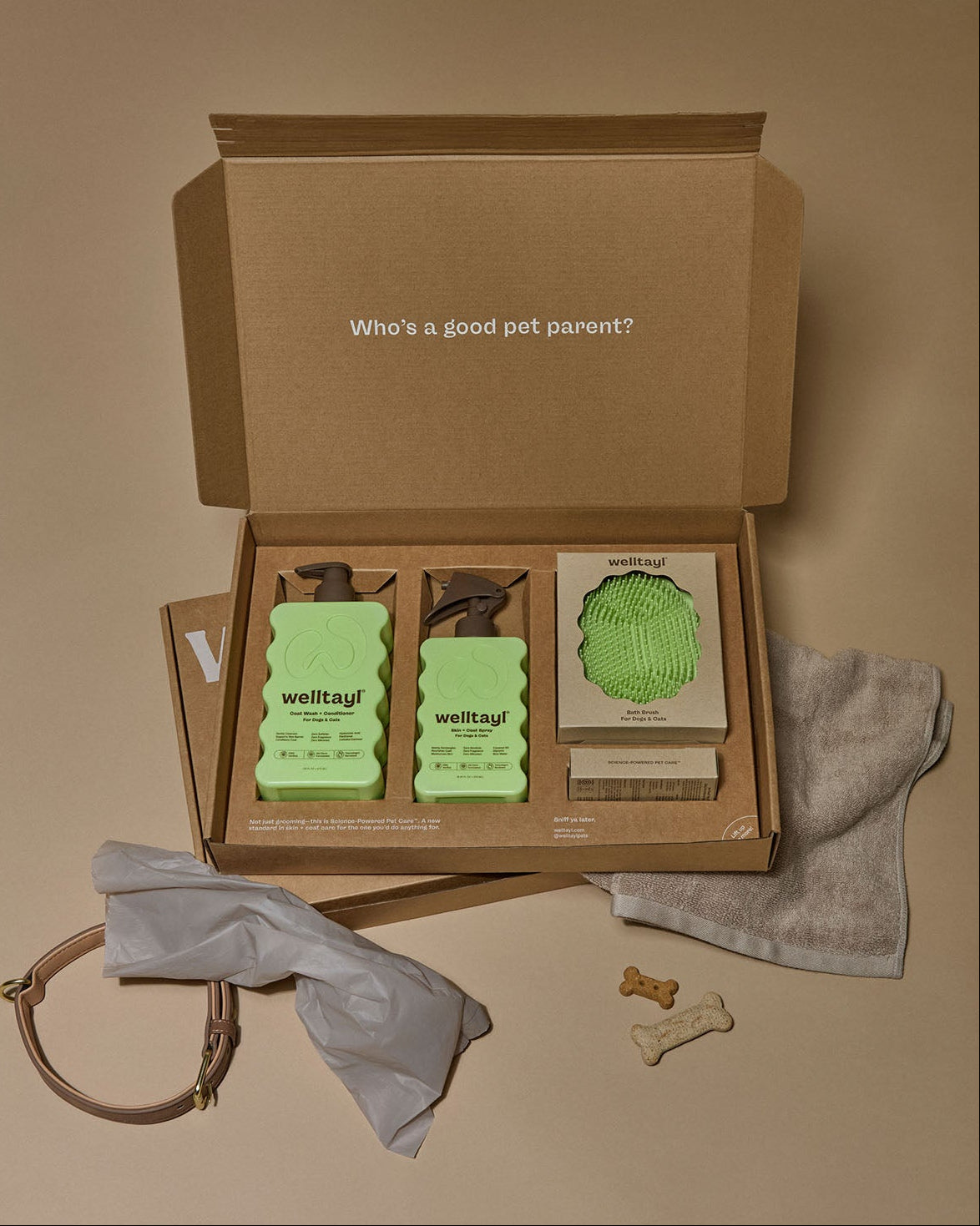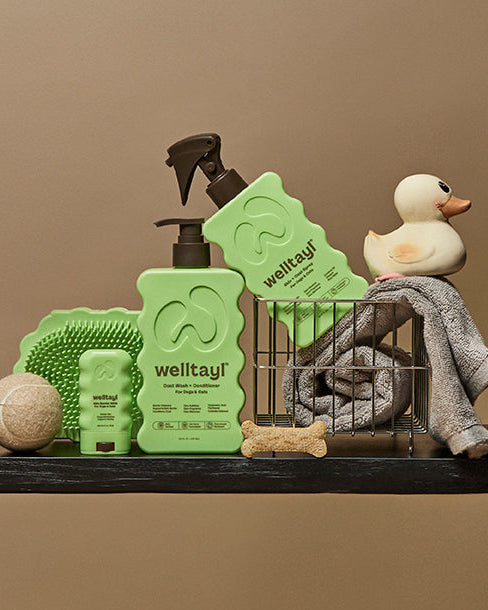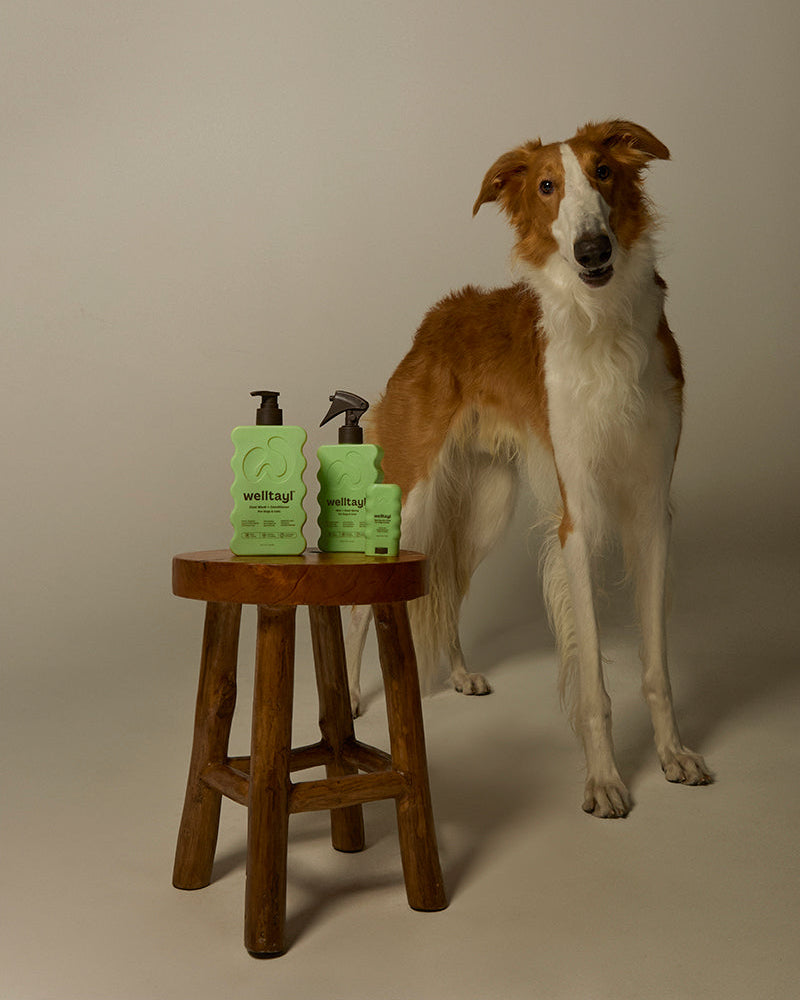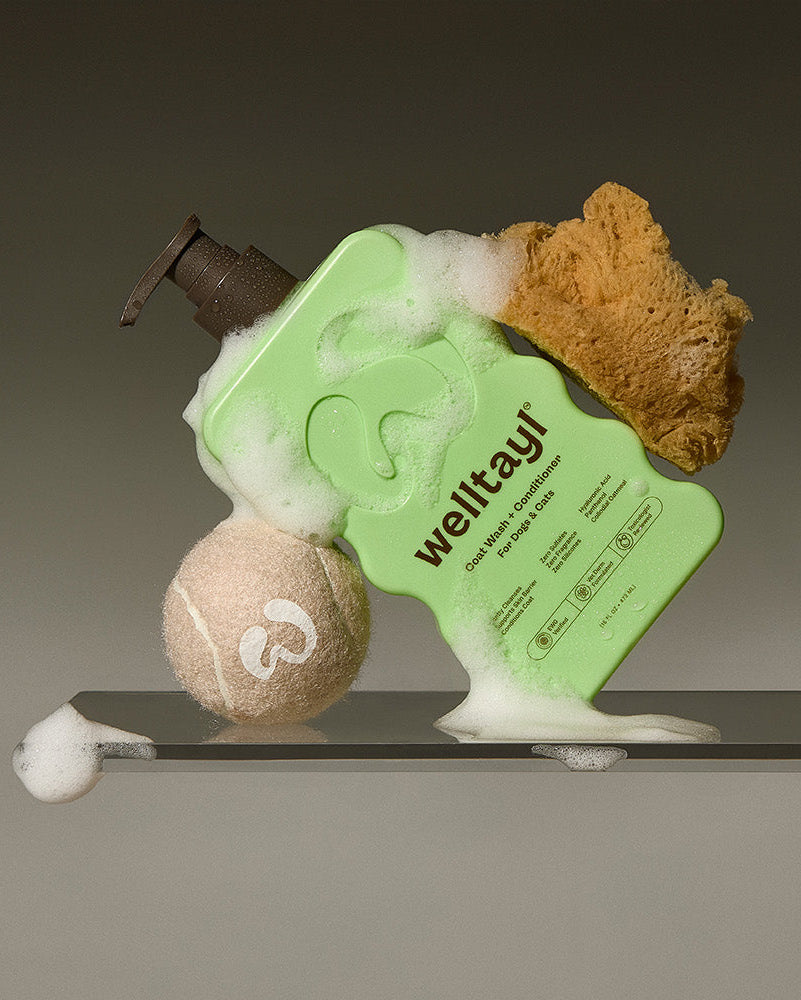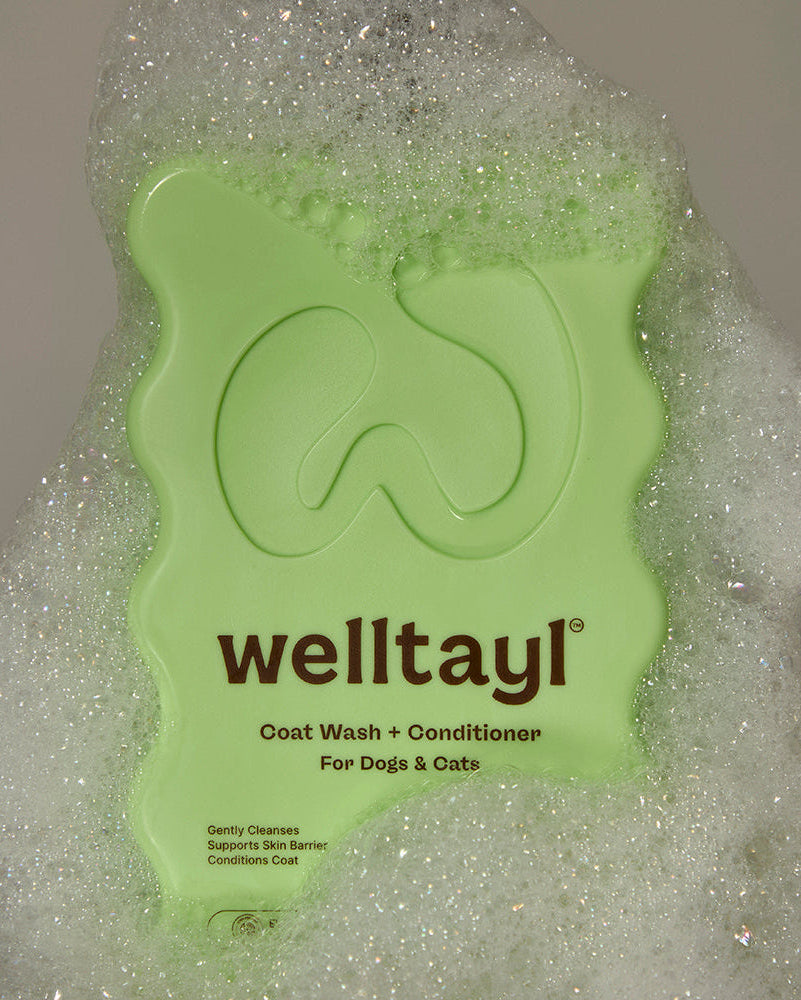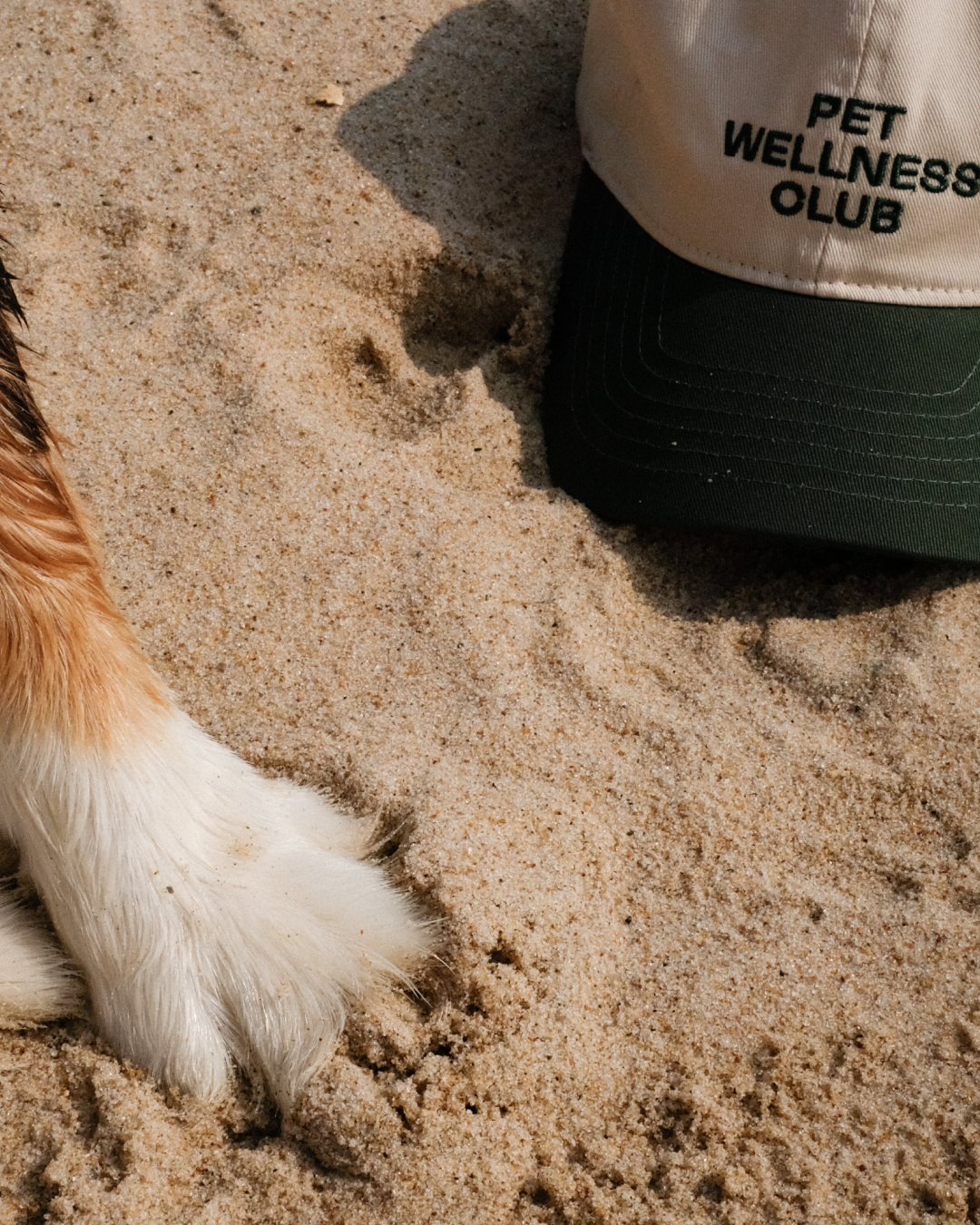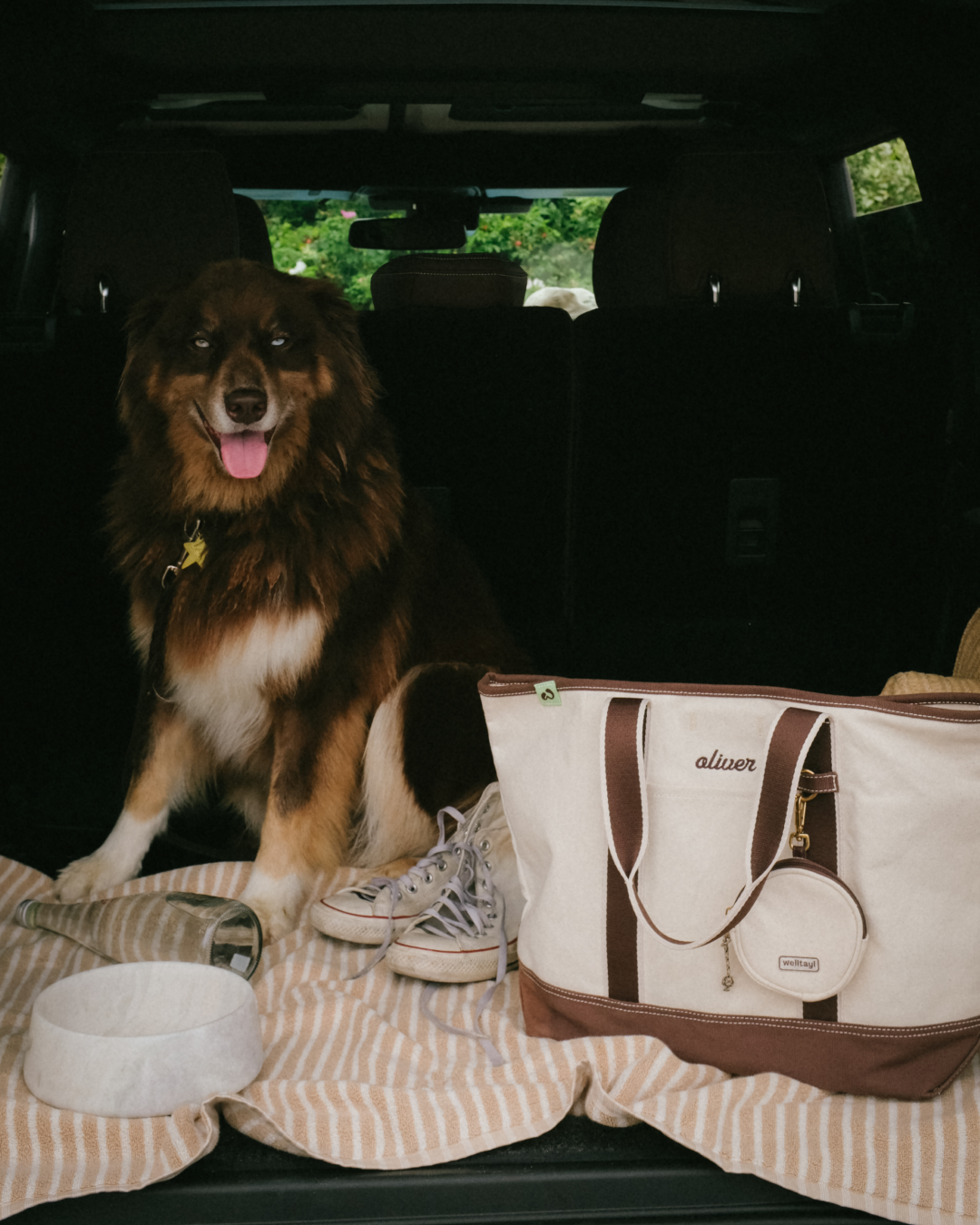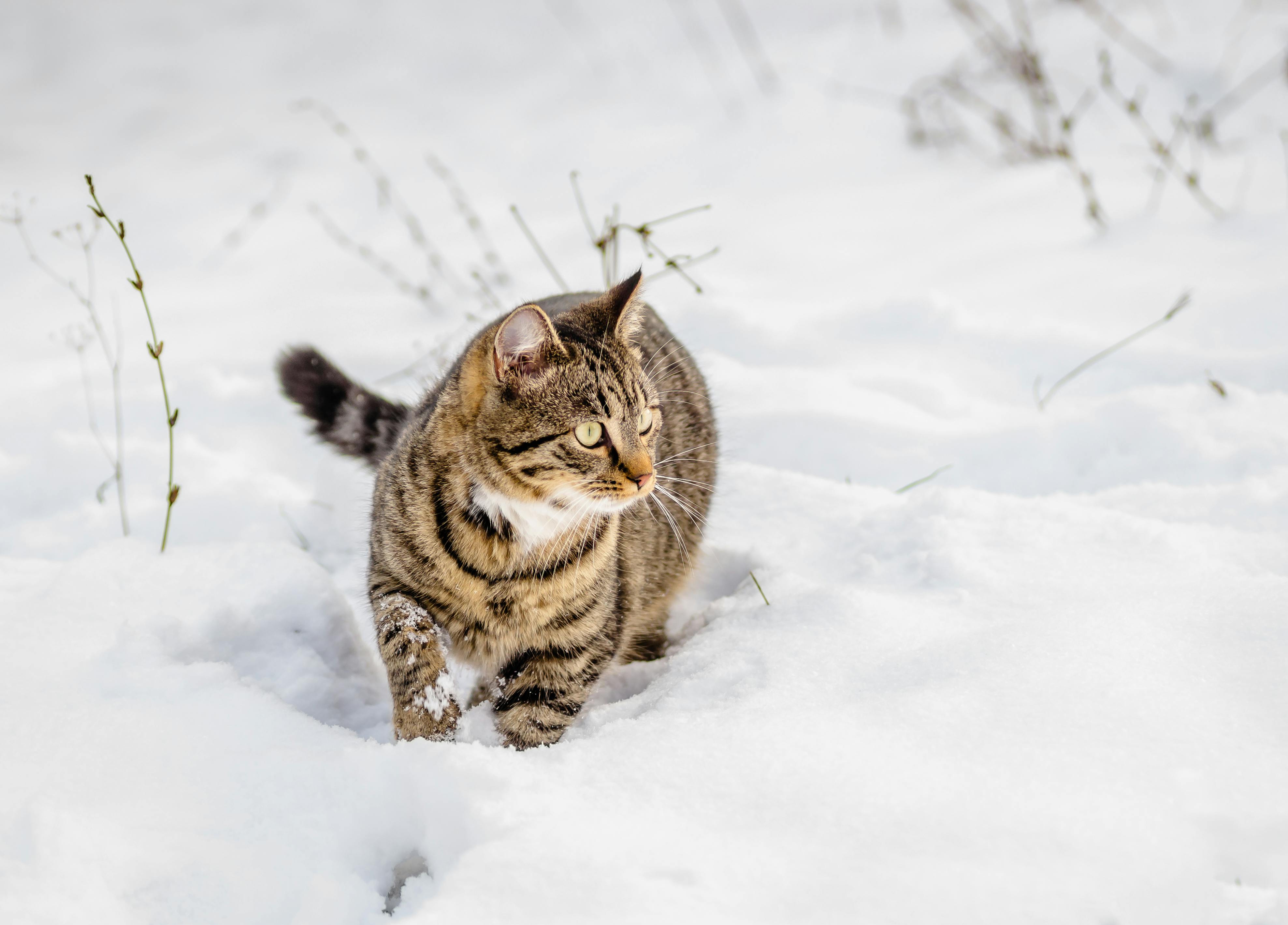When the temperatures drop, your cat feels it too. Cats are natural heat-seekers, always curling up in the warmest spots they can find—whether it’s a sunny windowsill or a pile of freshly dried laundry. But during the chilly winter months, they might need a little extra help staying cozy and comfortable.
Table of Contents:
- Do Cats Get Cold?
- How To Tell If A Cat Is Cold
- How To Keep Indoor Cats Warm
- How To Keep Outdoor Cats Warm
- 3 Additional Winter Safety Tips For Cats
- Conclusion
- Frequently Asked Questions
Key Takeaways
-
❄️ Cats feel the cold too: Both indoor and outdoor cats can struggle to stay warm in winter, especially short-haired or hairless breeds.
-
🕯️ Create warm spaces indoors: Provide cozy bedding, avoid drafty areas, and offer sunny spots to keep your cat comfortable.
-
🏠 Shelter for outdoor cats: Build insulated shelters with materials like straw and ensure they're placed in areas less exposed to elements like snow or wind.
-
🐾 Protect paws and skin: Use pet-safe salts outdoors, wipe paws clean, and promote hydration to reduce dry skin.
-
💦 Monitor diet and hydration: Adjust food portions to meet energy needs and ensure water doesn’t freeze for outdoor cats.
-
🥶 Watch for signs of cold stress: Look out for shivering, cold extremities, or lethargy, and act promptly if you suspect hypothermia.
Do Cats Get Cold?
Cats can get cold, especially during winter when temperatures drop. Their fur provides some insulation, but it's not always enough, particularly for short-haired, and especially hairless breeds like Sphynx cats. Even long-haired cats may struggle in freezing weather if they spend time outdoors. Cold weather can make your cat uncomfortable and could potentially lead to health issues like hypothermia or frostbite.
Indoor cats may feel chilly too, especially if your home lacks adequate heating or has drafty areas. You'll notice signs of a cold cat, such as shivering, curling up tightly, or seeking warmer places like under blankets, near heating vents, or in your lap. Watching for these behaviors helps identify when your cat might be feeling chilly.
How To Tell If A Cat Is Cold
Cold cats often show specific behaviors and physical signs you can watch for. Shivering is a clear indicator they're struggling to stay warm. Look at how your cat sits; if they sit with their feet pulled close to their body, their tail wrapped tightly around themselves they may be trying to conserve heat.
Feel your cat’s extremities—cool ears, paws, or the tip of their tail could mean they’re cold. Another common sign is your cat seeking warmth. They may burrow under blankets, snuggle in your lap, or sit near heaters or warm appliances.
Looking for more tips to help you care for your cat all year long? Sign up for the Welltayl newsletter today! Learn about caring for your pet in every season, with exclusive advice, resources, and guides sent straight to your inbox.

How To Keep Indoor Cats Warm
Indoor cats rely on you to stay cozy and content during winter. Small adjustments in their environment can make a big difference in keeping them warm and happy.
Warm and Cozy Bedding
Use insulating bedding and blankets to ensure your cat stays warm. Elevated beds can reduce exposure to drafts, but keep them low enough for easy access. Place bedding in a quiet, warm spot away from drafty windows or doors.
Take Advantage of Natural Warmth
Position your cat’s bedding in a sunny area to let them soak up the limited winter sunlight. If they nap by windows, add blankets or pillows to make these spots more comfortable and insulated.
Playtime and Activity
Encourage your indoor cat to play and move. Physical activity generates body heat and helps them stay warm. Use interactive toys like feather wands or laser pointers to keep them active, especially in colder months. Schedule short play sessions throughout the day to maintain their mental and physical health.
Clothing and Accessories
Consider warm clothing like soft sweaters for cats with short or thin fur. Only use clothing if your cat is comfortable, and check that it fits well without restricting movement. Avoid leaving clothes on for extended periods to prevent overheating or discomfort.
How To Keep Outdoor Cats Warm
Outdoor cats face unique challenges in winter, including extreme temperatures and limited resources for warmth. Providing suitable shelters and taking precautions can make a significant difference.
How To Build An Outdoor Cat Shelter
Create a simple shelter using a large Rubbermaid bin. Cut a small entry hole on one short side, a couple of inches above ground. Line the inside with Styrofoam panels for insulation and fill gaps with straw for added warmth. Putting straw underneath the shelter can add further insulation. Drill a small drain hole in the floor to prevent water buildup. Choose a secure, level location for placement.
What To Include In The Shelter
Use materials like straw for insulation. Avoid blankets or towels that can get wet and freeze. Place the shelter in a wind-protected spot, like near a wall or fence. For added appeal, sprinkle a little catnip or a few treats inside.
Precautions For Outdoor Cats
Monitor shelters regularly, especially after heavy snowfall, to ensure entrances remain clear. Check for wear and tear, and repair any damage promptly. Consider providing multiple shelters, as cats can be selective about their resting spots. Before using your car, check under the hood and around tires since cats may use these areas for heat.
Get more helpful tips in your inbox! Sign up for the Welltayl newsletter, where you’ll find expert advice and easy ways to help all cats stay safe, cozy, and happy year-round.

3 Additional Winter Safety Tips For Cats
Cold weather can pose unique challenges for cats, making it essential to take extra precautions to ensure their safety. Here are some focused tips to keep your cat protected and comfortable during the chilly winter months.
1. Protecting Paws And Skin
Cats' paws can become irritated by ice, snow, or salt-covered surfaces. Use pet-safe salt on sidewalks and driveways to protect your cat's paws if they venture outside. After your cat comes inside, wipe their paws with a damp cloth to remove any harmful residues. This also helps prevent them from licking harmful substances off of their paws. A pet-safe paw balm like Welltayl's Skin Barrier Stick can help keep their pads moisturized and protected from salt or ice.
Dry skin is another common issue during winter. Fish oil supplements can improve the skin barrier, offering some relief for dry or itchy skin. Brush their coat regularly to distribute natural oils, but avoid using human skin products that are too harsh for cats.
2. Monitoring Food And Water
Ensure fresh water is always available and replace it regularly if kept in outdoor areas to prevent freezing. Consider using heated water bowls for outdoor cats.
Adjust your cat's diet to meet their energy needs during colder months. Indoor cats being less active in the winter may need slightly decreased portions to avoid weight gain, while outdoor cats, facing more extreme conditions may require increased portions as they are using extra energy to maintain body warmth.
3. Recognizing Signs Of Hypothermia
Monitor your cat for signs of hypothermia, especially if they've been in the cold longer than usual. Symptoms include shivering, cold extremities, lethargy, and difficulty moving. If your cat seems unresponsive or appears unusually sluggish, contact your veterinarian immediately.
Conclusion
Keeping your cat warm during winter is essential for their comfort and health. By understanding their needs and making a few adjustments, you can ensure they stay cozy and safe no matter the weather. Whether your cat is indoors or outdoors, a little extra care goes a long way in helping them thrive during the colder months. Stay attentive to their behavior and create a warm, loving environment that keeps them happy all season long.
Stay Updated with More Pet Knowledge!
For more cat info and knowledge, consider signing up for the Welltayl newsletter. It's packed with helpful advice tailored for dog owners like you, ensuring your pets stay healthy and happy. Sign up today and keep up to date with the latest in pet care.
Frequently Asked Questions
What temperature is too cold for cats?
Most cats become uncomfortable when temperatures fall below 45°F. Anything under 32°F can be dangerous for cats, especially if they're elderly, sick, or have short fur. Extended exposure to temperatures below 25°F can lead to hypothermia and frostbite.
How do I keep my cat warm in a cold house?
Provide warm bedding in elevated locations, seal windows to prevent cold air drafts, and ensure they have access to sunny spots. Keep them indoors and provide multiple cozy sleeping spots with soft blankets or cushions.
How can I tell if my cat is cold?
Common signs include shivering, seeking warm places, curling into a tight ball, cold ears and paws, hunching close to the ground, and sleeping more than usual. They may also try to burrow under blankets or sit close to heat sources.
Can cats survive in a house without heat?
While cats are resilient, they shouldn't live in an unheated house long-term. Indoor temperatures below 50°F can be dangerous, especially for kittens, elderly, or sick cats. Cats need a consistent warm environment with temperatures between 65-75°F for optimal comfort.
What are the best ways to keep indoor cats warm in winter?
Provide warm bedding with blankets in draft-free areas, encourage playtime to generate body heat, and ensure access to sunny spots during the day. For short-haired breeds, consider using a well-fitted pet sweater when appropriate.
How can I protect my cat’s paws from snow and salt?
Use pet-safe salt on walkways and wipe your cat’s paws after outdoor excursions to remove snow, salt, and chemicals. For outdoor cats, regularly check their paws for dryness or cracks and apply a pet-safe balm if needed.
How can I prevent my cat from getting hypothermia?
Provide a warm shelter, monitor for signs of cold (shivering, lethargy), and limit exposure to freezing temperatures. If you suspect your cat has hypothermia, contact a veterinarian immediately.
Resources:
Read more
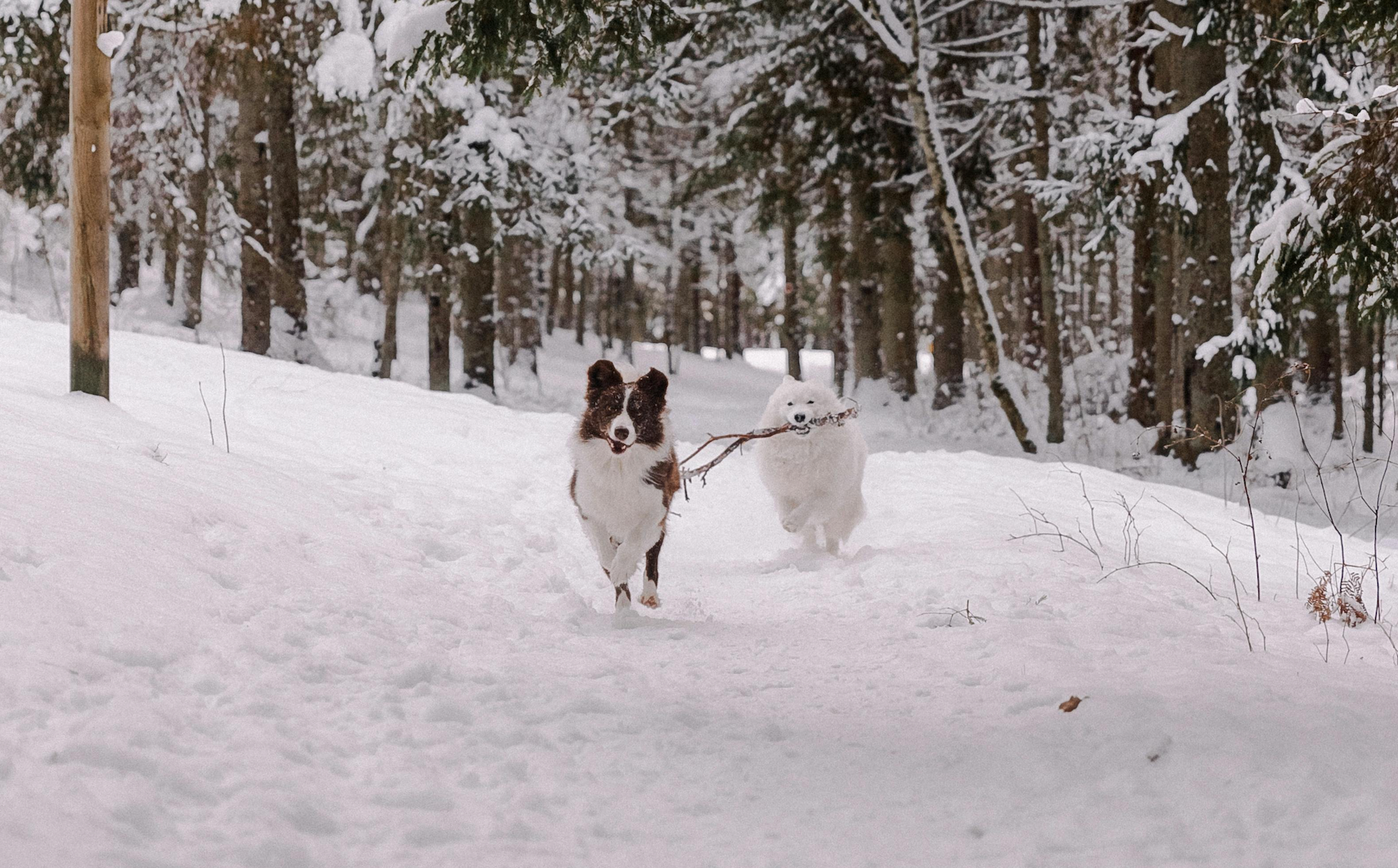
Winter can be a magical time for you and your dog, with snowy walks and playful romps in the cold. But while your furry friend might love the chilly weather, their paws may need some extra attentio...
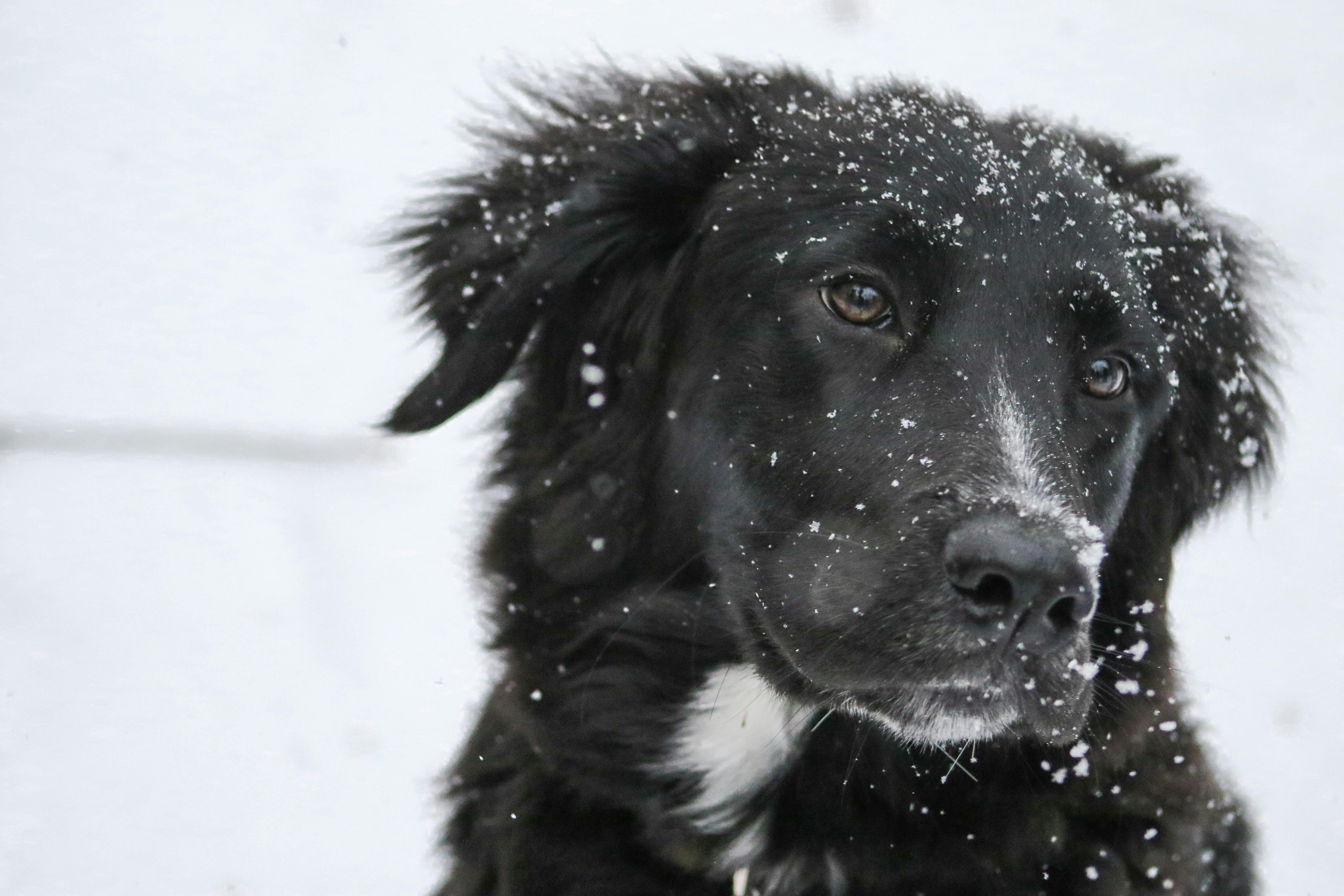
Discover vet-approved tips to keep your dog warm this winter. Learn about cold prevention, grooming & nutrition. Keep your pet happy and healthy all winter long.

